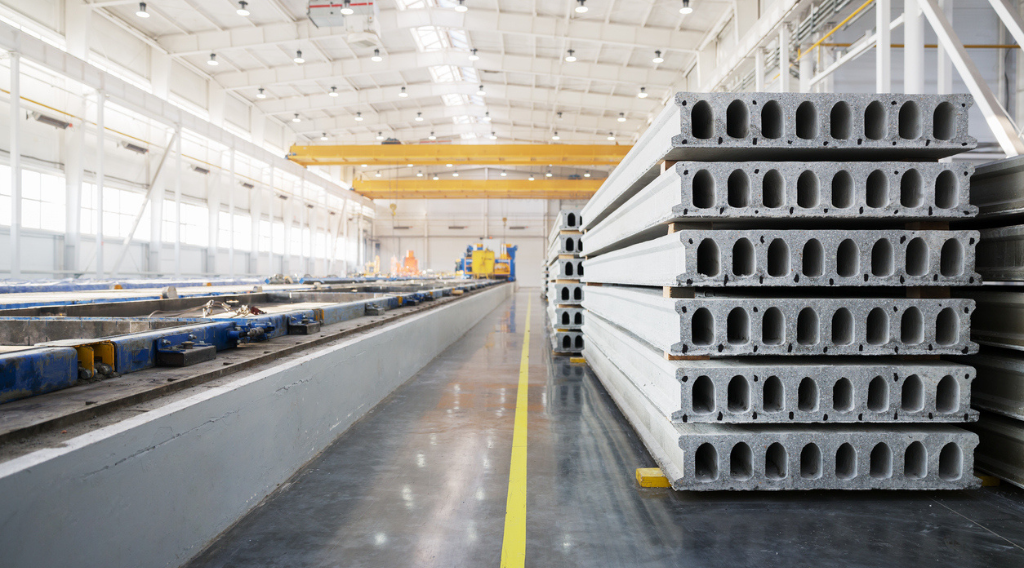 Direct air capture (DAC) is one of many carbon management technologies that can provide opportunities for the US to reduce its carbon dioxide (CO2) emissions to meet midcentury climate goals while providing environmental and economic benefits to local communities.
Direct air capture (DAC) is one of many carbon management technologies that can provide opportunities for the US to reduce its carbon dioxide (CO2) emissions to meet midcentury climate goals while providing environmental and economic benefits to local communities.
Certain factors make building a DAC facility or hub more cost-efficient, making it important to determine what places are best to locate them. To help identify these locations, the Great Plains Institute (GPI), in partnership with Carbon Solutions LLC, developed An Atlas of Direct Air Capture, Opportunities for Negative Emissions in the United States.
Here are some key takeaways from the atlas:
- DAC removes CO2 from the atmosphere and will help achieve US climate goals.
- Seven regions throughout the US are optimal areas for hubs, each with its own unique advantages.
- Various factors can make regions more suitable for DAC siting, including a location near existing low-carbon energy sources, existing infrastructure, and geologic storage assets of potential hub regions.
- Recent bipartisan legislation includes funding for DAC efforts, including $3.5 billion for direct air capture hubs. Funding applicants for the US Department of Energy’s (DOE) DAC hubs program will need to consider environmental and energy justice in these applications.
What is direct air capture?
DAC is a range of technologies that remove CO2 directly from the atmosphere. The process used to remove CO2 can vary and is commonly referred to either as (1) low-temperature or solid DAC or (2) high-temperature or liquid DAC. Low-temperature DAC uses a solid filter and vacuum to remove CO2, while high-temperature DAC uses a series of liquid chemical reactions to remove the CO2. After the CO2 is removed, it can be permanently stored in a geologic storage formation on-site or transported to other locations for reuse or storage.
Why do we need direct air capture?
According to global climate modeling scenarios by the United Nations Intergovernmental Panel on Climate Change (IPCC) and the International Energy Agency (IEA), we must reach net-zero emissions by midcentury to keep the average global temperature rise to 1.5°C to 2°C above preindustrial levels by 2100. Direct air capture will play a vital role in meeting these emissions reduction goals in both the US and the world by removing carbon dioxide that has accumulated in the atmosphere and offsetting emissions from sectors that have yet to decarbonize.
IPCC and IEA modeling makes clear that large-scale carbon management, including DAC, is needed to meet midcentury emissions targets. Nearly all global modeling scenarios require the economywide deployment of negative emissions technologies, such as DAC and bioenergy with carbon capture, to achieve net atmospheric carbon removal in the latter half of this century.
What factors need to be considered before building a direct air capture facility?
Project developers consider various factors when planning to build DAC facilities and hubs, including the following:
- Is there nearby low-carbon, cost-effective energy to power the facility?
- Is there a nearby low-carbon heat supply to use in the DAC process?
- Will transporting and storing or using captured CO2 be cost-effective in this location?
- Will the climate provide optimal technology operation?
Developers may also consider co-locating their facility with other decarbonization technologies or strategies that harness the energy needed to power a DAC plant, existing infrastructure, and geologic storage assets of potential hub regions.
What did the Direct Air Capture Atlas evaluate?
In total, the DAC atlas examines 17 factors to help determine what locations are best suited for building DAC hubs. These factors can be summarized into three categories: transporting and storing CO2, powering a DAC facility, and technology efficiency.
Transporting and storing CO2
For any DAC facility to achieve net-negative emissions, the CO2 captured from the atmosphere will need to be transported and securely stored underground in a saline geologic formation.
Certain areas of the country have more of these formations than others. Facilities sited closer to these areas may need to build less CO2 transport infrastructure, which can significantly reduce the cost of building a DAC facility.
Powering a DAC facility
A DAC facility needs energy in the forms of heat and electricity to remove CO2 from the atmosphere, both of which can be obtained from low-carbon sources. The atlas scored locations based on the categories described below.
Electric energy grid factors: DAC facilities need electricity to operate, making it important to consider the capacity and emissions intensity of the electric grid near potential siting locations. Powering DAC facilities with low- or zero-carbon energy will allow a facility to have negative emissions.
Low-carbon heat: Heat is required to create pure CO2 for transport, use, or storage during the DAC process. Some DAC facilities can use low-carbon sources of heat, from geothermal, biomass, or solar energy. The Orca DAC facility in Iceland, operated by Climeworks, is an example of a DAC facility using geothermal heat in its carbon removal process.
Heat with carbon capture: Heat can also be supplied to DAC plants from natural gas facilities equipped with carbon capture, providing a source of heat for DAC technologies that need higher temperatures. Oxy Low Carbon Ventures, in partnership with NETPower and Climate Engineering, is developing a DAC facility that will use natural gas with carbon capture to provide both heat and electricity to the DAC facility.
Waste heat recovery: Waste heat is energy that is a byproduct of an industrial or power process and is not used or is released into the surrounding environment (thus “wasted”). For example, much of the energy created by fuel combustion is lost to heat. Combined heat and power systems with waste heat recovery methods can capture this lost energy and use it for other processes, including DAC.
Technology efficiency
DAC facilities are sensitive to the atmospheric conditions around them, making their location a key part of how efficiently they can capture CO2. High humidity and high temperatures provide optimal climate and atmospheric conditions for DAC system operation, although the temperature has a higher impact on their efficiency.
What are the best locations for direct air capture hubs in the US?
The atlas identifies seven regions across the United States that are most suitable for developing DAC hubs—California, Rockies and Northern Plains, Permian, Midcontinent, Gulf, Midwest, and Mid-Atlantic and Great Lakes. While this analysis identified seven optimal regions, DAC facilities will need to be deployed wherever feasible.
Figure 1. Overall DAC suitability scores: regional advantages and opportunities for DAC hub development

How will direct air capture hubs be funded?
Although determining the best places to site DAC hubs is a good first step, the federal government and private investment will play a critical role in bringing these projects to fruition. While some DAC technologies are reaching commercial deployment, there is still significant room for growth in efficiency and cost decreases.
The US government has provided funding to help springboard this technology, including $3.5 billion through the DAC hubs program under the US DOE. Through this program, the federal government will provide funding for four regional DAC hubs, with a goal for each facility to capture one million metric tons of CO2 per year. DOE will provide funding at various stages of project development.
When applying for funding, applicants must consider equity, environmental, and energy justice issues under the federal Justice40 (J40) initiative. Most programs funding DAC and carbon management projects fall under J40, including the Regional Direct Air Capture Hubs.
For DAC hubs, DOE’s Office of Fossil Energy and Carbon Management outlines steps for project developers applying for funding under their programs in Creating a Justice40 Initiative Plan. These steps allow applicants to describe their strategy for addressing energy and environmental justice in their project.
Learn more about the atlas by watching our webinar
On March 2, 2023, GPI hosted a virtual webinar on the atlas. During the webinar, GPI staff presented the background behind the atlas and an overview of DAC. Carbon Solutions LLC staff gave an overview of the atlas, and Jessie Stolark, executive director of the Carbon Capture Coalition, shared thoughts on DOE’s DAC hubs program and environmental justice. Watch the release event below or on our YouTube channel.
Interested in learning more about carbon management? Reach out to Emma Thomley to connect with our Regional Carbon Capture Deployment Initiative (RDI) or receive news through our weekly RDI Update.


